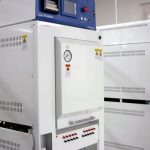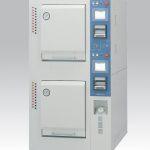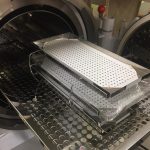In effort to improve the reliability of products, many different industries, just to mention a few, including semiconductor, pharmaceutical, LED and solar companies turn to HAST testing as a shorter alternative to THB Testing.
The acronym “HAST” stands for “Highly Accelerated Temperature/Humidity Stress Test.” The acronym “THB” stands for “Temperature Humidity Bias.” THB testing takes 1000 hours to complete, whereas HAST Testing results are available within 96-100 hours. In some cases, results are available in even less than 96 hours. Due to the time saving advantage, the popularity of HAST has continuously increased in recent years. Many companies have completely replaced THB Test Chambers with HAST Chambers.
THB (Temperature/Humidity/Bias) holds 85°C/85% RH condition while bias loads are applied to the samples. It has become less useful in recent years due to the improved packaging and passivation materials.
Highly Accelerated Stress Test (HAST) was formulated to decrease the test time needed to get useful results. Due to time constraints on projects, engineers look for a faster solution to learn if their product meets the standards of their particular industry. HAST testing uses a high temperature (105°C), high relative humidity (about 85%), and high atmospheric pressure conditions (up to 4 atm). HAST testing loads the specimen with heat and moisture stresses to find the concealed defects that could cause failure for the user relying on it. In testing products for reliability, defining the test conditions is the primary step. A common standard used for HAST is JEDEC JESD22-A110. Test conditions must meet application conditions in order to make testing relevant. HAST Testing has also in turn become a more cost effective alternative.
HAST is recommended for the shortened qualification of any change that can potentially affect the corrosion resistance of the product. Therefore, a new package and/or a new fab assembly site demands HAST data. HAST is also recommended for changes in the die glassivation, metallization or thin film resistors, as well as changes in the molding compound.
HAST Testing continues to find more applications for accelerated testing of newer materials and products.







